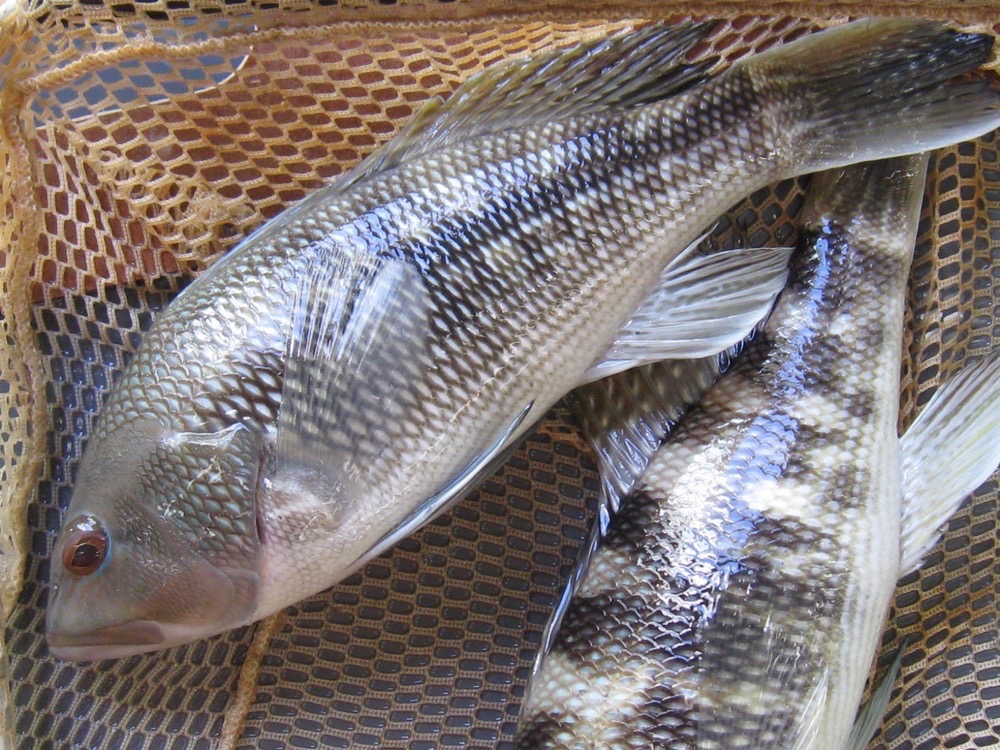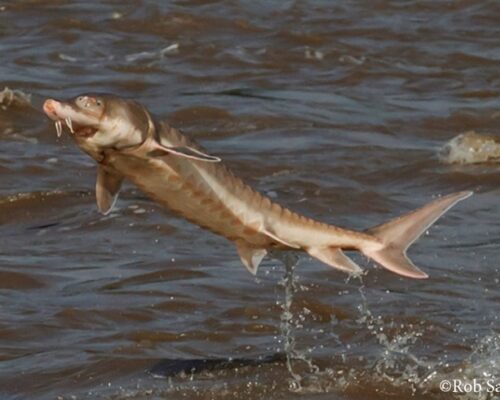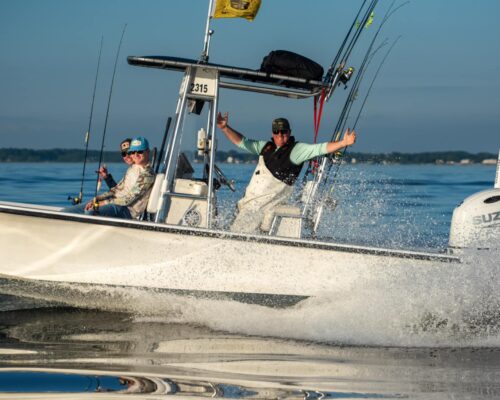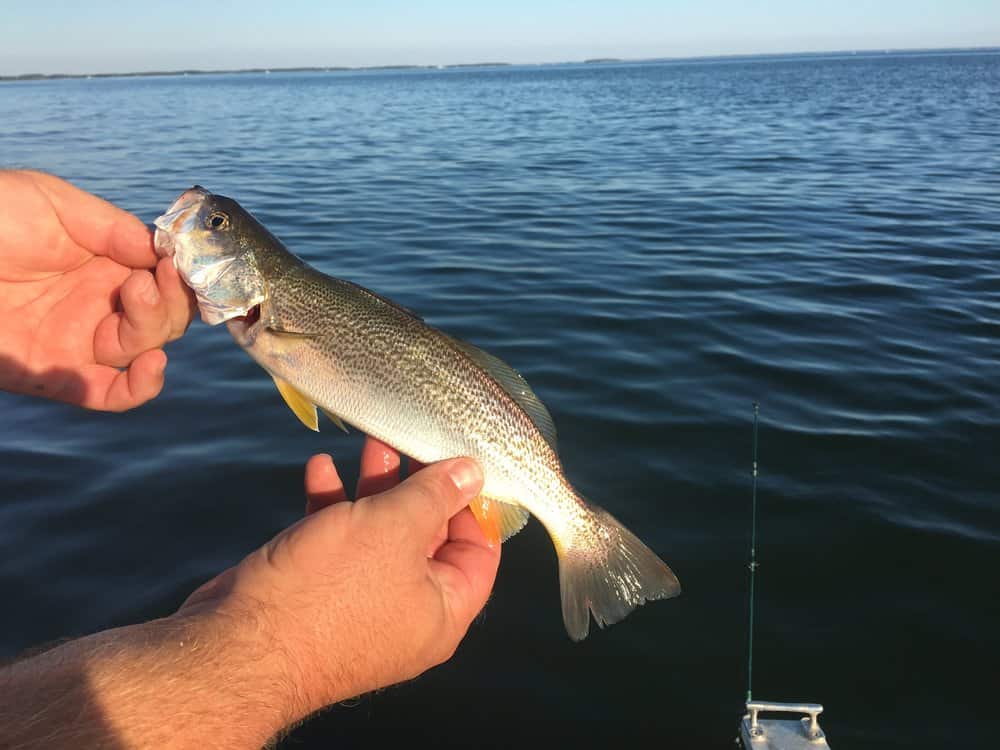Like most anglers, I can be a creature of habit, fishing my go-to honey hole for the same species time after time. After all, if it ain’t broke, why fix it? But variety is not only the spice of life, it also bodes well for anglers looking to add to their species list and expand their experiences.
With few rockfish (stripers) in the Chesapeake Bay these days, diversification is more important than ever. As conservation groups work with fishery managers to rebuild the East Coast striper stock, many conservation-minded anglers are doing their part. More of us are practicing catch-and-release of this prized gamefish, as well as targeting other species such as blue catfish, snakeheads, and black sea bass.
The first two fish might ring a bell for upper Chesapeake fishers, but perhaps not so much on that third species. Also known as blackfish, sea bass are tasty bottom dwellers typically caught in the ocean waters off the Delmarva Peninsula. Catching a legal black sea bass in Maryland’s part of the Chesapeake Bay was considered rare not too many years ago.
However, based upon on-the-water reports from anglers and charterboat captains, that seems to be changing. Moreover, Maryland state biologists caught black sea bass in their winter trawl surveys for the first time in 2020 and 2021. Although there is no scientific consensus as to why the blackfish’s range is expanding, they’ve been caught in even more northern waters, as far north as Buzzards Bay, Mass.
On the upper Bay, the best terrain for catching sea bass is similar to that in the Atlantic—meaning, over reefs and other structure. In the Chesapeake, we commonly call such important fish habitat “live bottom,” which traditionally has referred to the Chesapeake’s vast oyster bars. Sadly, the Bay’s once-prolific vertical reefs are a mere fraction of their historical abundance. So today, live bottom—at least to me—can mean any structure on which a thriving ecosystem exists; a place where bottom fish can hide, rest, and feed in favorable conditions. Manmade reefs and other hard-bottom areas fit that bill. There’s a lot of good work going on in this arena.
By now you catch my drift: The key to getting on a good sea bass bite is finding a good patch of live bottom. Otherwise, you better have packed a good lunch because it’s likely to be a long day waiting for a nibble. Generally, in the summer, blackfish like to hang around the shallower depths from 15–25 feet. The fish then move to deeper waters on the reefs as the water temperatures drop in the fall.
Some of the more popular reefs that hold sea bass and other gamefish include the Gooses, Tilghman, Point No Point, and Tangier Reef. This is a partial list, however, and several sea bass grounds are conveniently close to a public ramp.
You can catch Chesapeake Bay sea bass with either a conventional or spinning outfit, albeit on lighter gear than what’s used on the coastal reefs. Anglers I spoke with often use the same setup that they use when vertically jigging for stripers—meaning, a bait caster reel spooled with 15-pound braid, matched with a rod of medium power with fast or extra-fast tip. Spinning reel fans will do fine with a 3,000-sized reel also loaded with 15- to 20-pound
test braid.
I exclusively use braid because of its low stretch and abrasion-resistant properties. More importantly when targeting fish like sea bass, which can hit gently, it’s much more sensitive than mono so you can better detect the strike. The caveat is that if you have novices on board, braid can be more hassle than it’s worth, since in the wrong hands it can easily foul into a bird’s nest of unimaginable horrors.
If you’re new to fishing, or taking folks that are just getting into fishing, a friendly heads up: Braid is so fine that it can slice skin if handled improperly. Braid is also finicky about which knots it will take. You have several options but two that I prefer for braid are the palomar knot and the uni-knot. The latter requires a few extra steps from traditional versions. Not sure what I mean? Remember, YouTube is your friend.
Sea bass will hit bait and lures, with a preference for fresh bait—as fresh as you can get it. You cannot go wrong with bloodworms, squid strips, and other fishy bait. Did I mention it should be fresh? Also, processed baits such as Fishbites have been known to bring strikes. A standard top-bottom rig, flicker-style hooks, and the new Chesapeake sabiki rigs are proving themselves to work well. Go on the smaller size with hooks: #2 or #4 hooks on your bottom rigs, and 1/0 or 2/0 hooks on your lures.
Speaking of lures, I reached out to Captain Lonnie Johnson, inventor of G Eye Jigs and Rain Minnow lures, for his take on what the sea bass like. He’s been enjoying a good sea bass bite for a few years so his intel is timely.
“Last year, I ran the gamut with bait and lures,” he said. Not surprisingly, his favorite lure is the Rain Minnow, a metal jig he makes and sells. Pink and blue were the hot ticket, though it probably didn’t hurt that he tipped them with squid. Other sea bass-catching metal jigs include Lil’ Bunker and Crippled Herring.
Here are a few other tips. After locating fishy structure with your fishfinder, deploy a wreck marker so you can easily return to that spot. GPS is helpful, but the surface marker can make your drift more efficient and easier to replicate, not only when the bass are biting well but when current and wind affects your drift. Anchoring up can
also work.
As far as keeping a few for dinner, sea bass are an excellent-tasting fish that can be prepared in several ways. Maryland’s regulations for the Chesapeake Bay and its coastal waters are identical: May 15–Dec. 31, 2021, with a minimum size of 12.5 inches and a daily creel of 15 fish. Virginia’s limit is also 15 fish at least 12.5 inches long. In my opinion, you only need a handful. So if you’re looking for a change of pace from the other bass with the seven stripes, the hard-fighting, good-tasting sea bass is just what the doctor ordered.




